For the first June in four years it actually feels like we may get a real summer. Ladies and gentleman, start your tomatoes! (Well, actually, you needed to start them three months ago, but maybe if this unusual Northwest sun keeps showing up they’ll really start ripening fruit for us?)
Plan & Purchase:
Shocking, isn’t it, that it’s time to plan the fall and overwintering garden? Gets me every year. If you are into the year-round harvest thing, now is when you get your gameplan together and start planting for things as far away as next May’s cauliflower.
My new favorite at-a-glance guide to Fall and Winter Gardening comes from West Coast Seeds. They are kinda like the Canadian version of Territorial Seeds. Check out their Fall & Winter Harvest Planting Chart For Coastal BC. It’s applicable to us US-side Maritime NW gardeners too. You can download a printable PDF of the chart here.
Sow Indoors:
Mid June is when start the first wave of fall and winter crops. Brussels sprouts take forever to grow, so if you want them for Thanksgiving (and I always do) you’ve got to start them now. Fall and winter cauliflower, winter cabbage and broccoli and kohlrabi (the big winter-keeper types) should all be started about mid-month.
At this time of year, if you have a greenhouse or sunny porch, you can start the fall crops outside, either in a nursery bed or in little pots. They will dry out quickly, though, so be diligent about watering. You can also turn the seed lights back on and start them indoors.
Be aware of what varieties you are planting. Spring brassicas aren’t bred to hold up in winter weather, so seek out varieties that will work for when you plan to harvest them. Territorial Seed’s Fall and Winter Seed Catalog and the West Coast Seed Fall & Winter Gardening Guide both have great, varietal specific info. I also list varietal suggestions on my free Year Round Vegetable Planting Guide (scroll down, it’s on there somewhere).
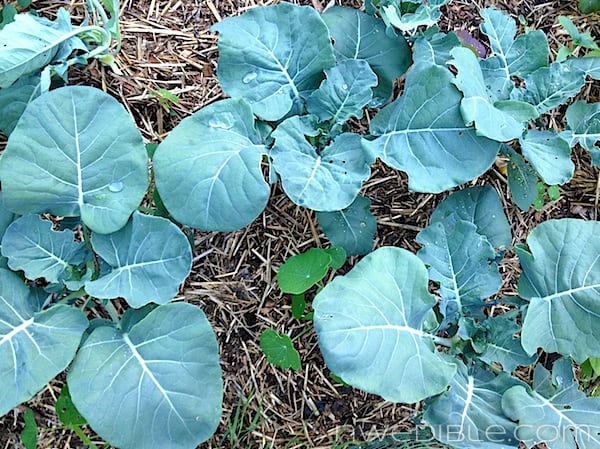
Plant Outside:
- Beans – I’ve got several plantings of beans up and climbing.
- Summer & Winter Squash – My squashes are all in. It’s getting late for Winter Squash, so if you plant now pick a faster maturing variety, but a sowing of summer squash can still go in reliably.
- Melons – Plant a short season variety.
- Cucumbers – Sow directly and try trellising! Cucumbers are easy to grow vertically and you get more in an area and get much straighter cukes that way. Cukes are pretty tender so give them a bit of protection for a few more weeks to get them off to a good start.
- Brassicas – Broccoli, cabbage, cauliflower, brussels sprouts, collards and kale and Asian greens like pac choi and Chinese cabbage, etc. can all be direct sown now but at this time of year you must think about days to maturity. Super fast maturing brassicas (many of the Asians) that would come mature in the heat of August aren’t necessarily the best idea because these crops favor cool weather. With those, waiting a couple of weeks or a month so that maturation happens in cooler September is a good idea. On the other hand, long-maturing brussels sprouts started this month will give you sprouts for Thanksgiving, whereas waiting a month may mean missing that window.
- Root Vegetables – You will have the best results in loose open soil and I encourage you to cover your carrot and parsnip seedlings with row cover to prevent the carrot root maggot from destroying your veggies as they do mine with some embarrassing frequency. A last crop of potatoes can also be put in at the beginning of this month if you sow short-season varieties like Yukon Gold. Mid-to-late June is a good time for your main fall/winter sowing, along with parsnips (last chance on these), beets, rutabaga and turnips. If you are plum out of room in the garden, these crops can be sown through July but yield and harvest size will be smaller.
- Corn – ASAP.
- Salad Greens – lettuce, (every month a new sowing!) warm-weather New Zealand spinach, mustards, arugula, etc . can all be sown. Plan on harvesting arugula and mustards as baby greens. They will bolt rapidly in warm weather. Rapidly.
- Swiss Chard – There’s still time to plant Swiss chard for bountiful late summer and fall harvest. Get it in now so it’s big and lush by October.
- Onions – green onions and overwintering leeks can be sown. Chives and garlic chives can be started in a nursery bed for a harvest next year.
- Herbs: Chives, parsley, mints, marjoram, oregano, dill, fennel, borage and the like can all be sown out. Cilantro, fennel, dill, and of course basil can all be grown. Plant lots of basil if you haven’t already! Everyone loves pesto.
Transplant Out:
All your warm weather transplants: tomatoes, peppers, eggplant, etc. should be fine going out now. It’s been a warm spring and overnight lows have been hovering around 50-55 in my neighborhood. This means, with a bit of protection (especially for peppers and eggplant), the tender stuff is ok to get in the ground if you haven’t already moved them out.
Be sensitive to where and how your transplant out. Harden your transplants gently if they are coming from a nice cozy greenhouse and be particularly gentle with eggplant and peppers, giving them a warm microclimate in which to snuggle, heat sinks (like wall-o-waters or big rocks) and extra attention, particularly if night time temps dip, which they still can at this time of year.

Harvest:
The season of major bounty is nearly upon us! I was a bit late getting most of my spring crops seeded, so the real fresh from the garden eating is just now really getting moving.
- Peas and favas – Snap peas are on and wonderful my bush peas. Pole peas and favas aren’t far behind.
- Lettuce and other greens for lots of salads. Eating a lot of arugula.
- Brassicas – I’ve had a few sad little broccoli heads, but the major brassica harvest is right around the corner. Summer cabbage is nearly there, caulis and decent size brocs are about to head.
- Favas
- Roots – Radishes, baby beets and a few overwintered carrots
- Earliest potatoes
- Strawberries
- Cherries (!) – my Early Burlat Sweet Cherry is living up to it’s name with our first batch of ripe cherries picked on June 3rd.
- Herbs of all kind
- By the end of the month, there is a good chance we’ll be eating the first of the summer squash. I got that seeded a bit late this year but I’m sure by September we’ll have had our fill.
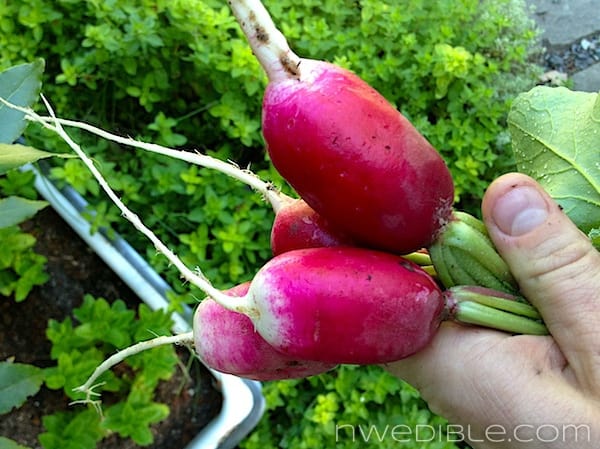
How does your garden grow?
4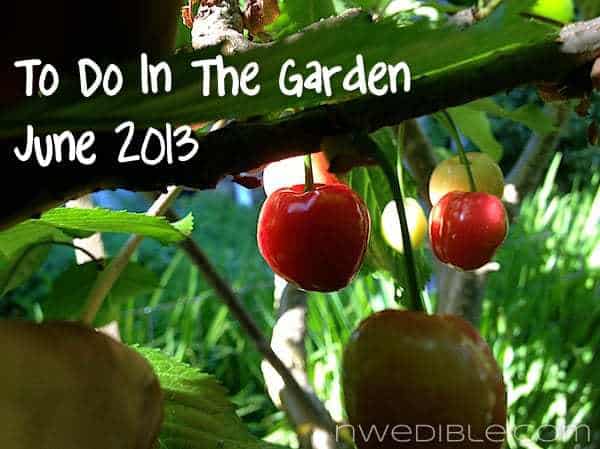
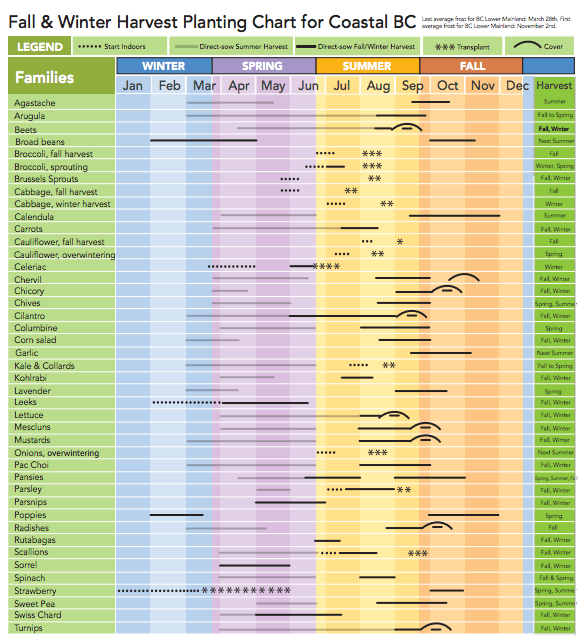
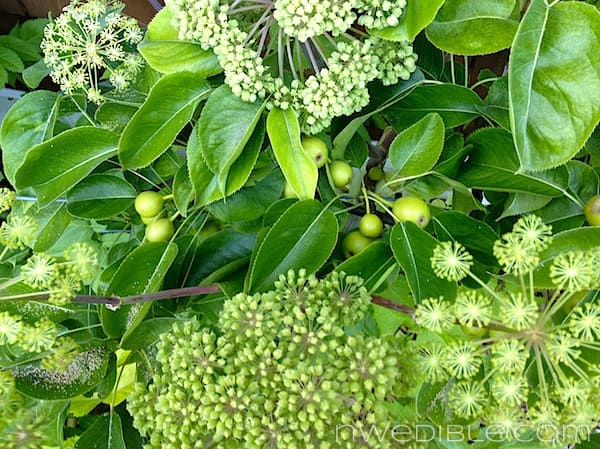
This is such a great website. Is there an equivalent for NorthEast residents?
Thanks!
Thank you, Erica! I have been planning my winter garden–just this morning–and was feeling a little overwhelmed. (I’m still new to all this!) Your information is always so useful. 🙂 On the positive side of being a newbie, I started my peppers weeks to early (a little too enthusiatic!), but because we’ve actually had spring here in the NW they are thriving! After two rounds of up-potting, I was forced to transplant them into the greenhouse about a month ago, and spent about three weeks having to protect them every night with quilts and Christmas lights. I learned my lesson about planting too early, but I gotta say, I harvested some four-inch green peppers last week! (I followed Steve Solomon’s advice to go ahead and let fruit set on the peppers in gallon pots.) I have dozens more on the way already. I wouldn’t repeat the risk, but I’m liking the result of the we-accidentally-got-spring mistake!
My summer squash is barely up – but growing fast. I started only 5 plants, so that we wouldn’t have a zucchini overload come august.
Honeoye strawberries are going strong and throwing out big beautiful berries for their first year in ground – I’m impressed with this type and will keep them going in pallet gardens.
Beans and peas, oh, my! Tons and tons. And bush beans (yellow wax – my favorite).
Also – a truck load of cilantro – I like to harvest the coriander seed as well as eat the leaves fresh.
Thanks for the great graphic – I printed it out and will pin it to my bulletin board hanging right next to the seed starting station. It’s so helpful!
We’re already seeing temps well into the 90’s here, so our garden is planted out and I’ve already got flowers on the tomato and pepper plants. Got a few squash flowers showing up too.
Looks like you’ve got your work cut out for you there. Good luck!
This post taught me why I’ve only eaten brussel sprout leaves and raab for two years in a row.
You’ve got me thinking about when I need to plant my tomato seeds… About another month or 2 (I’m in Ballan, Victoria Australia and last frost is 1st week November) so thank you! I’m ahead of the game this time. I have had to stick with bought seedlings, garlic and potato onions here for winter as I didn’t even begin to think about it until we harvested our tomatoes after first frost. I’m still a newbie gardener (if you can’t already tell). So, time for me to start planning and planting seedlings for spring. Asparagus in now, toms in a month, corn then too, what fun!
I am so glad I found your site. I was looking for NW gardeners and this has been very helpful. This is my third year with a garden and every year I am more and more successful. I have never done fall or winter crops and still unsure about the “overwintering”. I need to do some reading up on that.
Thanks for all the great info.
Yes–so glad that it seems like we’re going to get a regular summer at last! Love that shot of the dill, etc. above–gorgeous!
Hi Erica,
What do you use as your cross-pollinizer for your early cherry?
Thanks for your garden updates! Very helpful!
You always have the best charts! I love this blog, has taught me a lot in my first year of serious gardening. Just wish I could find charts for eastern canada as I’m moving to Nova Scotia in September.
Feeling SO jealous right now. All I have growing is some garlic in pots that I brought with me from Colorado to Texas. I’m not even sure it will produce anything. !!! I can’t wait until I can plant something again!
Very helpful, thank you! Quick question : is it time for onions too? Mine is falling over and I think is going to flower 🙁 :(. This is my first time growing onions, and everything on the web is confusing …
I just harvested my first ever Elephant Garlic. It has some small “bulbettes” on the outside of the bulb. If I plant these, will they eventually grow into full size garlic? When I planted it originally I used fully sized cloves.
Let’s see. We have been eating green leafy things for a while, the thrill is wearing off. However, there is nothing else yet, apart from radishes and green onions. Wait, we had a half dozen asparagus spears. Peas are growing well, but not even blooming yet. Beans are just up, tomatoes are blooming in the greenhouse. The worst casualty this year was a dozen excellent brassica plants that got DEMOLISHED by slugs right after they were planted out. Some of the kale is recovering but the cauliflower is a total loss. We were away for 4 days, and the Chinese cabbage took the opportunity to start flowering. More brassicas and lettuces were started just before we left, they all came up. Better get back out there. I still have a neglected section to dig up before I can plant the squashes out.